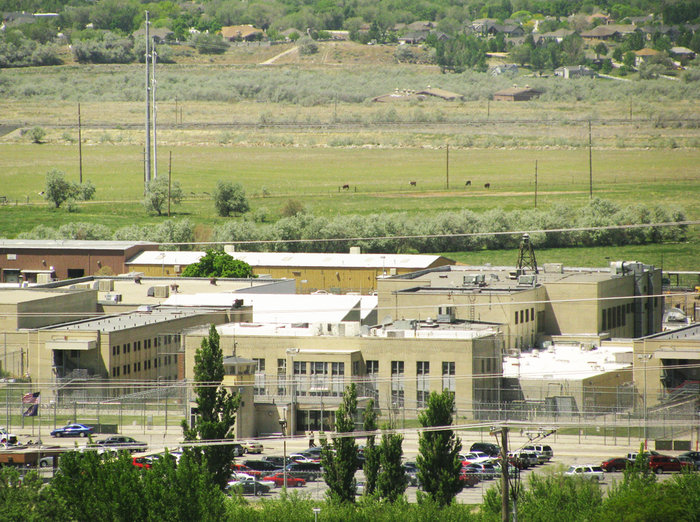A new commission is being proposed to help determine the future of the 700-acre state prison site in Draper once the facility moves to Salt Lake City.
A new commission is being proposed to help determine the future of the 700-acre state prison site in Draper once the facility moves to Salt Lake City.
The House Economic Development and Workforce Services Committee voted 6-2 last week to advance to the full House a bill that would create a 12-member Point of the Mountain Development Commission. HB318 calls for the commission to evaluate, study, develop a plan, prepare reports and make recommendations for the future planning and development of the area.
Its recommendations would be presented to Gov. Gary Herbert and several legislative committees by Dec. 1.
The Legislature last summer voted to move the prison to land near Salt Lake City International Airport — a site unanimously recommended by the Prison Relocation Commission — leaving the current prison property in Draper available in a few years. Many view the Draper site as a future key component of the technology-heavy “Silicon Slopes” area.
“It’s an important part of our state’s future in terms of how we manage the growth in this area, and I think it’s an opportunity that we don’t want to feel like we missed,” said House Majority Assistant Whip Brad Wilson, R-Kaysville. Wilson was co-chairman of the relocation commission.
The commission would consist of two senators; two House members; the mayors of Lehi, Draper and Salt Lake County; an appointee of the Utah County Commission; mayors from two other communities near the area, both appointed by the Utah League of Cities and Towns, with one each from Utah County and Salt Lake County; an employee of the Governor’s Office of Economic Development; and a member from the public representing the information technology sector with a physical presence in the area.
The bill calls for the commission to evaluate the costs and benefits of growth, land use and economic development strategies in the project area and the impacts of those strategies. It will consider several objectives, including “maximizing job creation,” “strategic residential and commercial growth” and “provision for a variety of housing types that match workforce needs.”
Wilson said the commission would hire consultants to help create a master plan for the site and determine ways to pay for needed infrastructure.
“At the end of the day,” Wilson said, “it’s charged with going out and saying, ‘All right, what is our strategy for the Point of the Mountain area that will ensure that we maximize this opportunity, so we create as many high-paying jobs in the right way at the right time in the right place and have synergy between these different places?’”
The Lehi/Draper area already has strained infrastructure due to growth, he said. Lehi has been booming, with more than 3.5 million square feet of office space under construction or newly finished and with a 15.1 percent increase in employment the past six years — ahead of the 3.9 percent rate in the rest of the state, he said. The area is attractive to companies that want to be located near each other and to employees wanting to work at those companies, he added.
“We really have this unique set of circumstances that no other state in the country is looking at right now, and it’s something that we need to continue to take full advantage of, quite frankly,” Wilson said.
Rep. Robert Spendlove, R-Sandy, echoed those sentiments.
“This presents an opportunity that you only get once in a lifetime, to really take this land that is being opened up and really do some good for the economy, not just of Draper and Lehi, but for the entire county and the entire region,” Spendlove said.
Draper Mayor Troy Walker also supports the bill, which would affect “one of the last big segments, frankly, of our community that’s not developed,” he said. “It’s our hope and vision that it will be planned smartly and there will be a comprehensive look at how to do it right.”
He stressed that the right transportation infrastructure needs to be developed there. “If you think about this particular area and the amount of jobs that will come here,” he said, “there’s got to be a significantly well-planned way to move people in and out and make it work. …”
Among others speaking in support of HB318 were Andrew Gruber, executive director of the Wasatch Front Regional Council; Lynn Pace, president of the Utah League of Cities and Towns; and Robert Rance, Lehi’s assistant city administrator.
Pace and Rance were among a few speakers who want an amendment clearly saying that the commission’s recommendations will not affect local taxing authority. Wilson said he believes the amendment is unnecessary but could be added.
Rep. Mark Wheatley, D-Murray, voted against the bill in committee because of the lack of the taxing-authority element. The other “no” vote came from Rep. Angela Romero, D-Salt Lake City. She said “there’s still a lot of hurt on my side of town with the prison relocation” and some constituents feel deceived because they thought the Draper site would be developed by the private sector.
Wilson said the bill does not say the state will develop the site and reiterated that it retains cities’ land-use authority. “This [commission] is determining what needs the area has so we don’t have massive congestion and so we have the infrastructure we need in that area,” he said. “And our intention is not, in this bill, to do anything specific or prescriptive with the prison property at all.”
The new location for the $550 million prison will be near Interstate 80 and 7200 West. The relocation commission had considered about 60 locations and three others were finalists: Grantsville in Tooele County and Eagle Mountain and Fairfield, both in Utah County. The Draper facility opened in 1951 and is expensive to maintain. It has about 1,000 workers overseeing about 4,000 inmates and has about 1,500 people who do volunteer work there.








